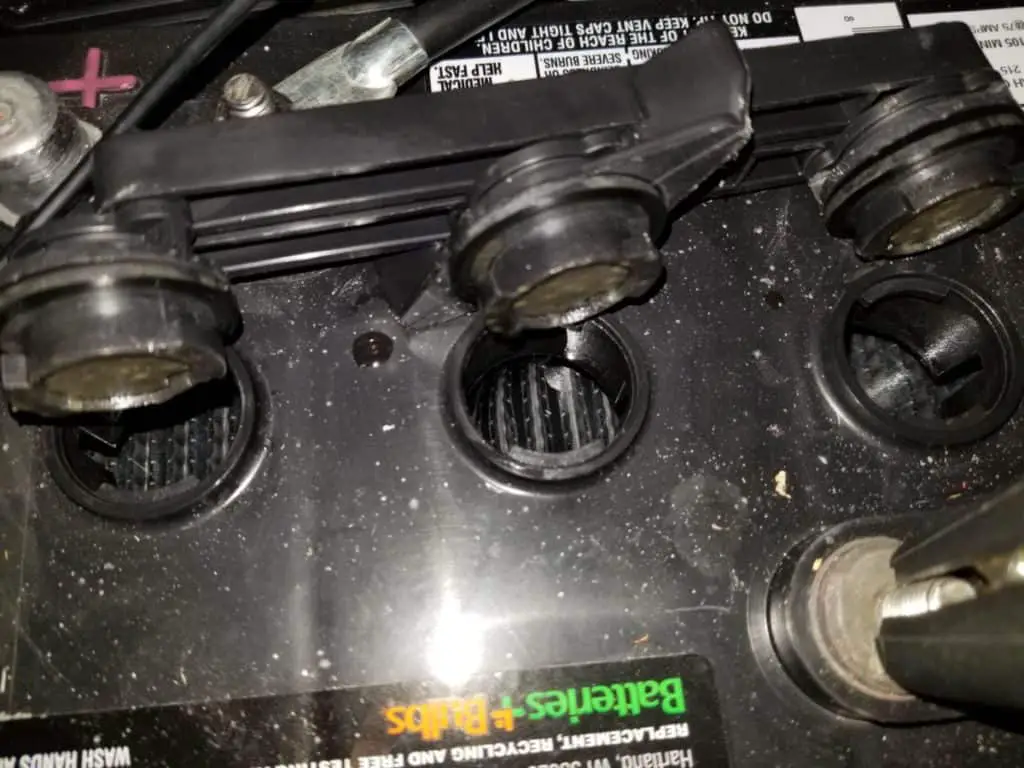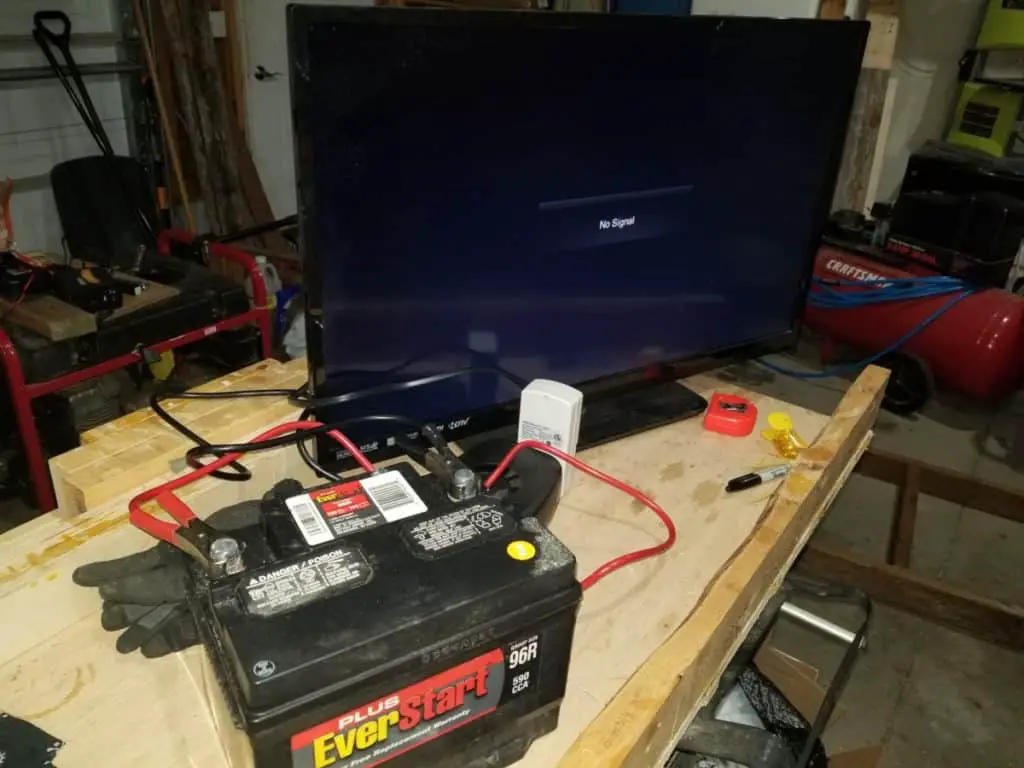If you left the lights on overnight in your car or if you were powering some appliances with your car battery, it might cross your mind as to whether or not draining a car battery will damage it.
Costing around a $100 and having a reliable one be essential for driving, it’s definitely a good thing to find out the answer to just how much stress a car battery can take.
Draining a car battery below 90% will begin to increasingly damage its longevity through the buildup of lead sulfate on the plates when discharged. This sulfation will cover the plates after a dozen deep discharges and prevent your battery from being able to hold a charge.
Let’s dive into why car batteries are not suited for being drained during deep discharges and what separates them from deep-cycle batteries, how long it takes a car battery to drain, and how many times you can drain it before it dies.
If you’re looking to power something with battery power but I just killed your dreams of using your car battery, consider either of these purposefully designed battery backup system (240-watt hours, or 500-watt hours) as a viable option on Amazon for powering what you had in mind.
Why Draining a Car Battery Damages It
The reason car batteries are easily damaged when deeply discharged (especially below 80%) is simply due to the construction and engineering that went into the battery to begin with.
A car battery is considered an SLI battery and its entire purpose and design was suited to release high amperage upon startup with your vehicle’s ignition system and then to have the alternator recharge it as you drive. SLI stands for “Starting, Lighting, and Ignition”. Notice, it’s not Starting, Power your Refrigerator and Coffee Maker. Don’t use it that way.
Even though a car battery and a deep-cycle battery undergo the same chemical reactions inside, there are some distinct differences between the two and I’ll cover them briefly as we go.
All of the differences stem from the lead plates themselves within the battery. Car batteries have more lead plates per cell, they are closer together, they are thinner, and they have more surface area. All of these attributes allow less internal resistance inside of the battery and makes it easier for the car battery to release a high current as you turn the key to your ignition.
A deep-cycle battery, on the other hand, has thicker plates, fewer plates, and they are spaced a little bit more to allow for not as much amperage at one time. Rather, a slow and controlled release of current over the long haul.

You might be asking yourself if both a car battery and a deep-cycle battery undergo the same chemical reaction, then why will a car battery die after only several deep-discharges and a deep-cycle battery could cycle for hundreds of cycles. It’s a good question and it stems from what the lead plates consist of and what happens to them chemically as a battery discharges.
Deep-cycle batteries are engineered with a protective alloy on the lead plates that prevents and lessens the effects of sulfation when discharging. Car batteries lack this alloy since they were never designed to go under a deep-discharge.
When you deep discharge a battery the chemical reaction that takes place inside of the electrolyte as the electricity drains out of the battery causes sulfation on the lead plates. Sulfation is a major killer of batteries.
The longer the sulfation stays on your lead plates, the harder it becomes and turns into a crystal-like substance. This crystal-like substance will increase in thickness and will increase the internal resistance of your battery making it harder to charge and harder to get current out of.
If the salvation builds up high enough they can actually bridge the gaps between the plates and cause an internal short which will immediately kill the cell in which it happens since it will no longer be able to accept and keep a charge.
The protective alloy in a deep-cycle battery allows the sulfation to be more readily knocked off when recharging the battery but this does not exist in a car battery so after only a dozen or so deep-discharges your battery will have so much sulfation and will cease to work.
How Long Does it Take a Car Battery to Drain?
How long it takes a car battery to drain is completely dependent upon the circumstance in which the battery finds itself.
If you leave your car battery connected inside your car it will last for about 2 to 6 weeks in your vehicle and still be able to start it (vehicle dependent). Much of the charge is taken out of the battery due to what is known as a parasitic draw.
All of your electronics in your car — even when your key is turned off — are still active to a degree. They’re mostly in “sleep mode” but they are still drawing small currents to stay properly programmed. Your anti-theft system, your clock radio, and more all draw a little bit of current, and the newer your car the more likely you have a higher parasitic draw since it will be outfitted with more electronics.
If you intend to leave your vehicle for longer than 2 to 3 weeks, I highly recommend getting a float charger like this one seen here on Amazon. This is by far my favorite float charger and I’ve used it daily for over 4 years without any issues. It is a simple, “set it and forget it” type of charger and can be left on your battery indefinitely. That way when you come back from a vacation your car will be ready to go.
I’m going afield, back to the topic!
Now, if your car battery is disconnected from the car and it’s just sitting on a shelf, it’s still not safe from going dead, but either is any battery. All batteries undergo what is known as self-discharge. And that is simply the car battery’s electrolyte reversing its chemical reaction after it has been charged and disconnected from that charger. It naturally wants to go back into a state of discharge.
A lead-acid battery typically loses about 5% of its charge per week just by sitting.
If you’re draining a car battery by powering a device, just keep in mind that a car battery will likely have about 600-720 watt-hours (12v battery * 50 or 60 amp hours –> volts * amps = watts).
You just need to know the watts of whatever you’re powering and do the math. If you’re powering a 10-watt LED light bulb with an inverter, then take 5-watts and divide by 0.85 to account for the inefficiencies of the inverter and you’ll have 11.76 watts.
720 watt hours from the car battery / 11.76 watts for the bulb and inverter inefficiencies = 61 hours until the car battery is 100% dead. It will probably stop working a bit sooner than that when the inverter shuts off due to the voltage getting too low.
With a car battery it is best to power things with an inverter while the battery is hooked up in the car and when you think the battery has been depleted by about 20%, start your car and let it run for at least 30 minutes to let the alternator put a charge back into it.

How Many Times Can a Car Battery Die?
Car batteries, when they go under 80%, start to experience damage and they definitely experience more internal damage the further they go below 50%. By damage, I mean the sulfation that occurs upon a deep discharge like we talked about earlier.
Car batteries can undergo a deep discharge about 10 to 12 times before they give up the ghost and you’ll be forced to buy a new one. Of course, this all depends on the current age and overall health of the battery and how well you’ve maintained it over the years. But a new battery, in good health, can probably be fully discharged or near fully discharged about a dozen times before it dies.
A deep-cycle battery, a designated battery backup system, or a generator are preferable for powering something for extended periods than a car battery.

